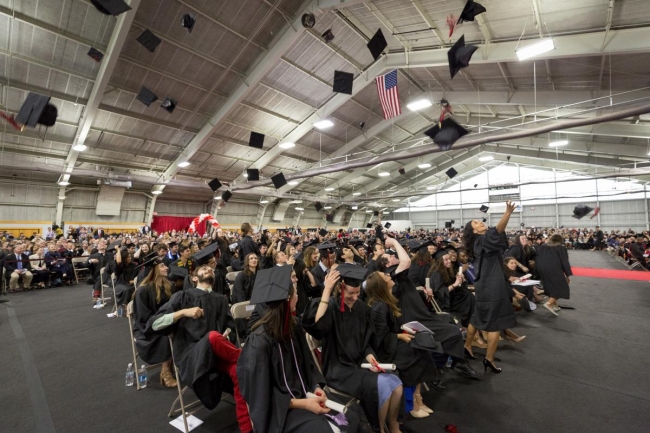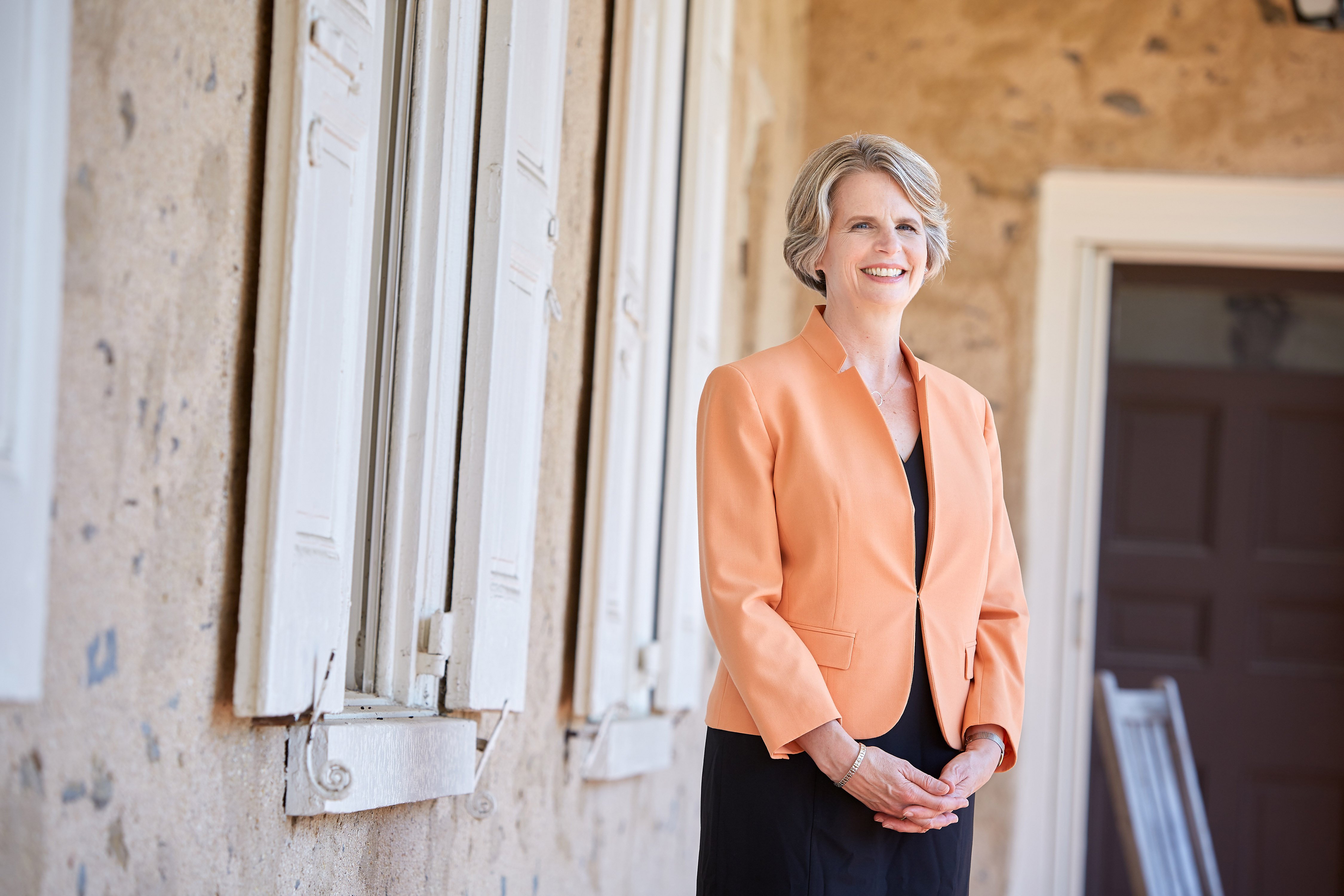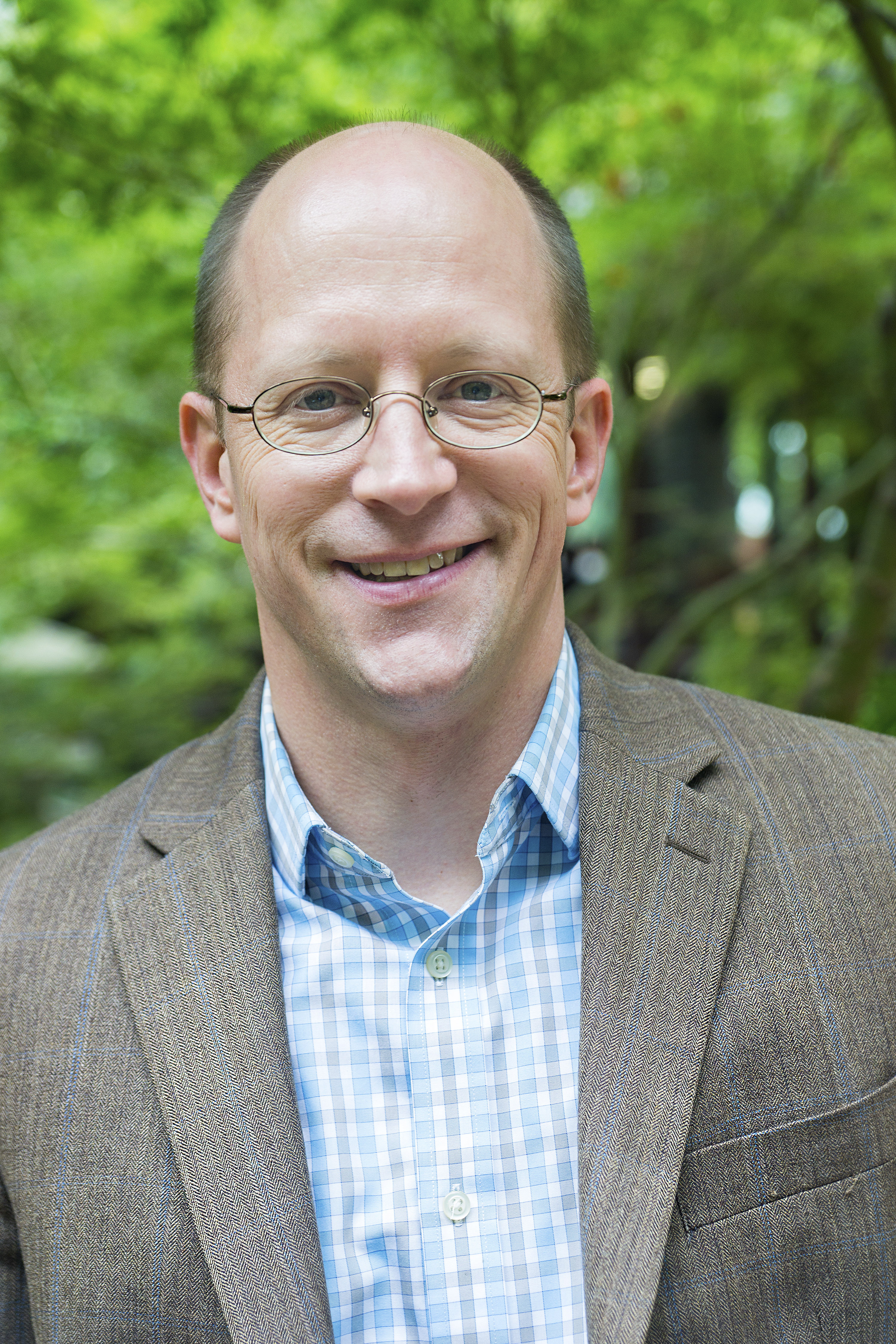You have /5 articles left.
Sign up for a free account or log in.

Dan Z. Johnson/Haverford College
Haverford College recently told a dozen of its recent graduates that it will essentially be picking up the bill for their first year of student loan payments.
The small private liberal arts college outside Philadelphia has informed 12 members of its Class of 2019 that they’ll be the first recipients of a new debt-relief program funded by a dedicated endowment. Sums being paid range from $900 to $1,500 per student, and students will be able to apply for up to two more years of payment relief to ultimately cover up to three years after graduation.
Those sums aren’t huge in comparison to the thousands of dollars a graduating student might owe. Nor is the number of students a particularly large portion of the 318 seniors who walked across the stage at Haverford’s commencement ceremony in May.
Nonetheless, Haverford’s leaders hope the program will have a big impact for both graduates and students who are currently enrolled. The idea is that debt-wary students who know their student loan burden can be lightened shortly after they leave college will be more open to pursuing their passions while still on campus -- or that they might be more willing to enter important fields after graduating, even if those fields don’t have particularly high starting salaries.
A few debt-relief programs with similar intent exist, including at institutions like medical schools, where debt levels are much higher than those for students who graduate from Haverford. Still, Haverford’s program might be of interest to college leaders at different types of institutions.
Although Haverford is a relatively wealthy institution where few students graduate with student loan debt -- fewer than 50 in the most recent class -- its new program is a fairly inexpensive, targeted way for it to signal that it cares about its students. It shows a college making an effort to address rising societal concerns about student loan debt even when it’s unable to promise students that they won’t have to borrow. And the program taps into donor interest, making it potentially appealing from a fundraising perspective.
 “I think it absolutely is a model that could be replicated elsewhere,” said Wendy Raymond, Haverford’s president. “I can imagine another place making different choices. But that said, if a donor were interested in debt relief, I can imagine this is highly replicable. This is a very low-overhead thing to administer.”
“I think it absolutely is a model that could be replicated elsewhere,” said Wendy Raymond, Haverford’s president. “I can imagine another place making different choices. But that said, if a donor were interested in debt relief, I can imagine this is highly replicable. This is a very low-overhead thing to administer.”
Haverford’s program comes after the college dropped a no-loan pledge earlier this decade. It did so at a time when many wealthy colleges were finding it difficult or impossible to keep their finances in line while promising students they would not have to borrow money to attend. Haverford has also dropped need-blind admissions in recent years, saying in 2016 that it would admit a small share of applicants based in part on ability to pay. That change drew criticism, including from a student who wrote that it represented a significant move away from core principles like prioritizing students' education over costs.
The college still pledges to meet all demonstrated need for admitted students, and it tries to minimize student debt. It promises students from families reporting incomes of less than $60,000 per year that they won’t be expected to borrow in order to pay for college. Those making more are still expected to borrow less than the federal student loan limits. Their loan expectations in their financial aid packages range from $1,500 to $3,000 per year. In total, they borrow less than $14,000 on average.
Haverford approved the change to its loan policy in 2014 and operated under it for the first time for first-year students enrolling in fall 2015. Those students went on to graduate in the Class of 2019.
“We were interested in coming up with a loan plan for students on financial aid that minimized indebtedness,” said Jess Lord, vice president and dean of admission and financial aid at Haverford. “We came up with a structure for loans which, on its own, puts us in position to claim to have some of the lowest student indebtedness in the country.”
Concern persisted that student debt would still affect some students, changing the courses of studies and career pathways they might be interested in pursuing. The idea of a program to minimize students’ concerns came after conversations with a Haverford board member, Lord said.
That board member was Steven M. Jaharis, whose family foundation ultimately gave $2 million to endow a fund to pay for students’ debt.
“Everyone on the board was disappointed when we couldn’t maintain the no-loan policy,” Jaharis said. “I felt that we need to let the students know we care about this issue and it’s a big deal.”
Jaharis is a family practice physician who is also on the Tufts University School of Medicine Board of Advisors. He’s given millions to that school, including a $2 million donation to create an endowed scholarship providing debt relief to students who choose to enter family medicine.
He views student debt as a burden for many students. In addition to giving to buildings -- which Jaharis has done -- he was hoping he and other donors would be able to help at least some students who felt constrained by debt burdens.
“I would love to see what other philanthropic people who give back to schools think about directly addressing it,” he said. “Perhaps they see it as valuable. Perhaps they see it’s still not addressing the underlying problem. In the meantime, while that’s being worked out, I want to help the students.”
Nuts and Bolts
Haverford’s program is designed to help students for whom college debt would be a “genuine burden.” Those who are eligible would have already had to have qualified for need-based financial aid while enrolled as students, according to Lord.
Those interested in receiving funds have to apply by the end of August of their graduation year and have to meet several criteria to be eligible. They can’t have access to other loan-deferral options like those for graduate students or those working for Teach for America. They must be either unemployed or on a “low income trajectory due to choice of profession.”
For those selected for the loan payments, the endowment fund makes a single annual payment for student debt. It covers payments for loans up to the amount students would have borrowed under Haverford’s financial aid package loan expectations. That’s important because students can technically borrow more for college than Haverford’s calculated standard loan expectation -- students can’t borrow more for college than Haverford recommends and then turn around and expect the college to pay for all of their loan payments.
Students receiving initial awards can apply for two subsequent years, for a total of three years’ worth of debt payments. The idea is that the program will continue to add students in subsequent years so that students from three different classes are eventually receiving debt-relief payments at a time.
When that happens, the estimated draw from the endowment will be $100,000, according to Lord. That’s a standard 5 percent draw from the $2 million endowment, enough to support about 15 students from each class.
College officials are hoping for future gifts to the fund. But the math works now in part because Haverford students take on relatively little debt, compared to many of their peers elsewhere.
Median debt for the Class of 2019 was $10,570, with average debt only slightly higher at about $13,600. That’s far below average debt for all borrowers earning bachelor’s degrees, which has been close to $30,000 in recent years.
 “Indebtedness is relatively low for us,” Lord said. “There were only 47 students who were even eligible from the criteria for having loans in their financial aid award. Of those 47, only 16 applied to the fund.”
“Indebtedness is relatively low for us,” Lord said. “There were only 47 students who were even eligible from the criteria for having loans in their financial aid award. Of those 47, only 16 applied to the fund.”
Going forward, Lord expects similar numbers of applicants to the program every year. About a third of students graduating with loan debt will not have deferment options, even though some of them might want to someday enter graduate school.
“We’ve had some folks who are interested in being researchers,” Lord said. “They’re actually interested in getting that kind of experience in the lab, which is not very high pay for someone with a bachelor’s degree but builds experience before they go into graduate school. The plan is to enter careers that may not pay very well but may have significant social good.”
Could the program be a model for other institutions? Similar models exist at medical schools and elsewhere.
Haverford’s program appears in many ways to be a smart investment, said Robert Massa, vice president emeritus for enrollment and college relations at Dickinson College, who has also been chief enrollment officer at Johns Hopkins University and Drew University. Some students will spend less out of pocket in loan payments, and the college has an attractive program to use in recruiting and fundraising. The program is also less expensive than a no-loan policy.
Still, a college or university would need to have a certain level of financial strength to consider a similar program, Massa said in an email.
“Only wealthy schools can afford to keep loans as low as Haverford does in the first place,” Massa said. “Replicating this at other schools that have fewer resources is less likely to happen. At the vast majority of colleges and universities, an endowment of that size, for example, might be better used to improve technology or facilities or academic advising or internships for students -- any number of priorities that need funding to improve the student experience.”
Some colleges have previously rolled out variations of a student debt forgiveness or buyback program. Wilson College, for example, unveiled a program in 2013 paying up to $10,000 toward students’ federal Stafford Loan debt if they meet certain academic requirements, service requirements and earn diplomas in four years or less.
Wilson College is a client of Stevens Strategy, a consulting firm for colleges and universities. Its founder and president, John Stevens, said in an email that concerns about student loans are exaggerated on a national scale. Student loans at institutions like Haverford are limited and not necessarily a problem for many students, Stevens added.
“Student loans are primarily a problem for students in certain high-cost graduate fields, and for first-generation and underprepared students primarily in community college and for-profit programs who have taken on debt, have not graduated and are in low-paying jobs,” Stevens said in an email. “That all said, the generosity of the Jaharis Family Foundation is well placed with students in low-paying public service jobs.”




